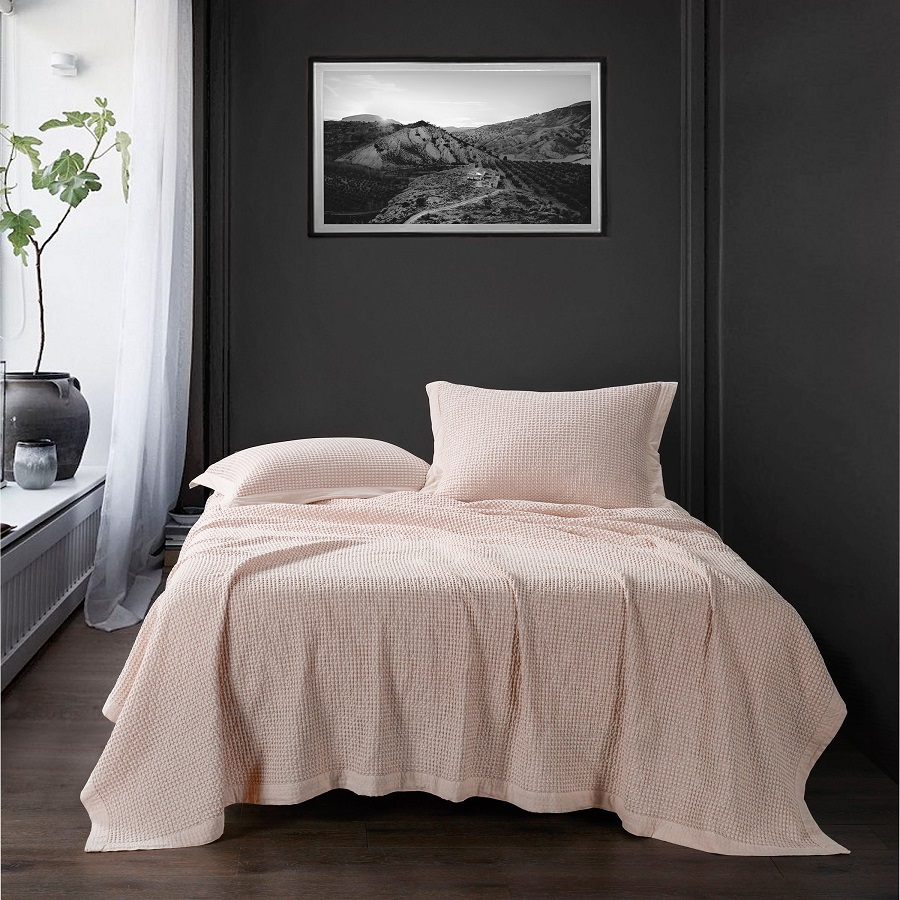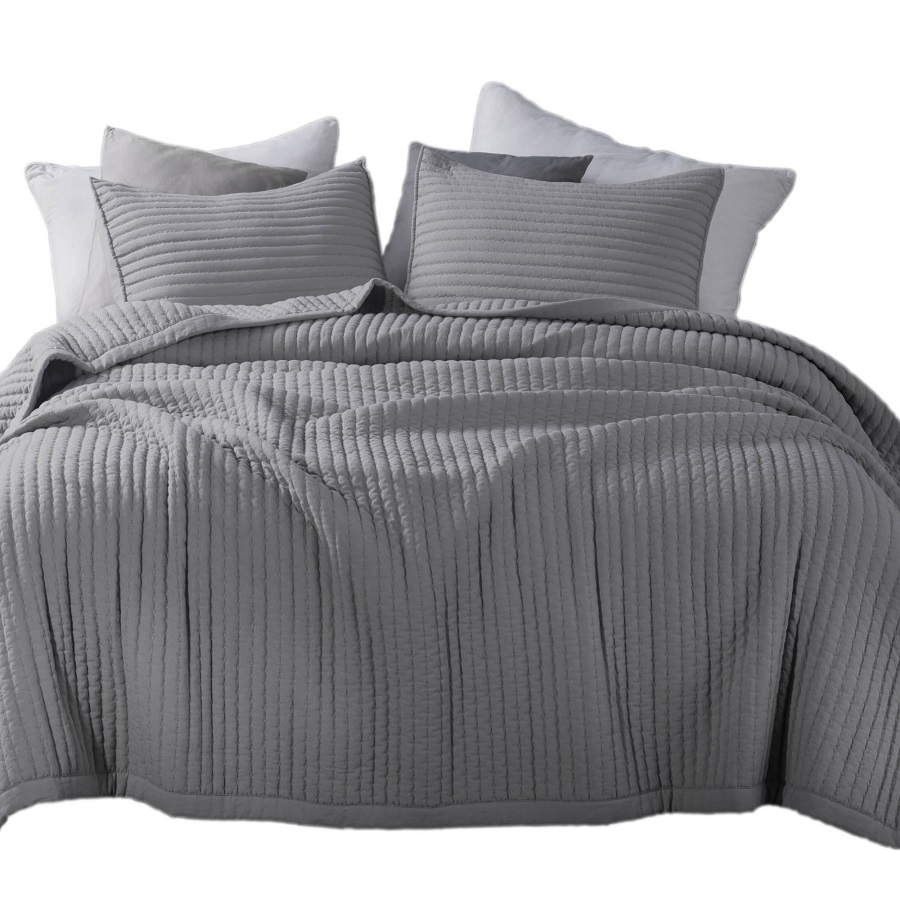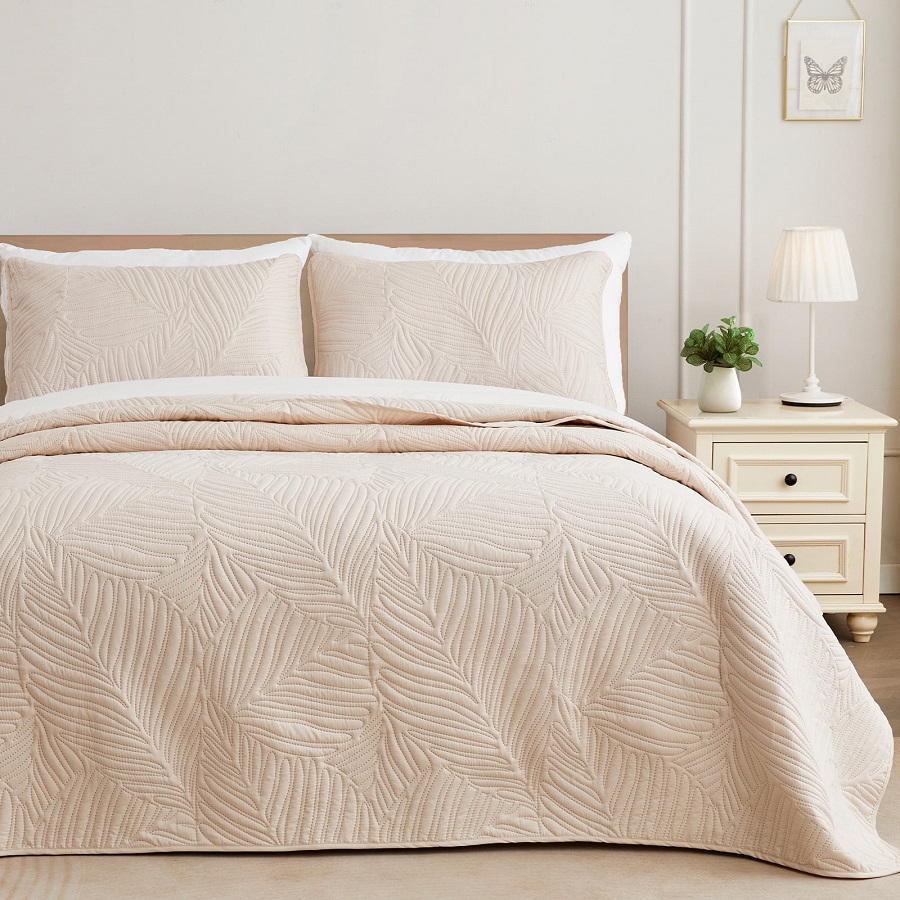Introduction to Bedspreads
When it comes to bedding, the variety can be overwhelming. Bedspreads are the topping layer that defines the bedroom’s look and feel. But what exactly are bedspreads? In essence, they are large pieces of fabric designed to cover the bed. They come in many styles, each with its own purpose and aesthetic. This includes comforters, quilts, duvets, and of course, the coverlet. Each has distinct characteristics ranging from thickness, warmth, and design. With options suited for all seasons and preferences, bedspreads can be decorative, functional, or both. This guide will help you navigate the world of bedspreads with ease, making your bed both a comfort haven and a style statement.

Defining a Coverlet
A coverlet is a versatile bedspread, sitting between a blanket and a quilt. It’s light and large enough to cover the whole bed, with its edges hanging down. Made from various materials like cotton, a coverlet’s unique texture comes from detailing like matelass? stitching.
You can use a coverlet as a main bedspread, replace a comforter for a lighter feel, or add it as a decorative top layer. In summer, its breathable quality makes it ideal for a comfortable sleep without overheating. Though less fluffy than comforters, coverlets offer an effortless elegance to any bedroom decor.
Coverlet vs. Bedspread
Choosing the right top layer for your bed involves understanding the differences between a coverlet and a bedspread. While both serve as bed covers, they have distinct qualities. Firstly, a coverlet is smaller than a bedspread, often with enough length to just touch or slightly drape over the bed’s edges. It’s perfect for those who prefer a neat and tailored look in their bedroom. On the other hand, a bedspread is larger, designed to cover the entire bed down to the floor, offering a more traditional appearance.
Coverlets boast a lightweight and often textured fabric, making them ideal for warmer climates or for those who tend to sleep hot. In contrast, bedspreads can be thin but are sometimes heavier and used mainly for decorative purposes. Modern bedspreads, though, may serve the dual purpose of decoration and light coverage during warmer nights.
Another difference lies in the finishing touches. Some bedspreads feature a reverse sham, a decorative fabric fold at the head of the bed, adding an extra element of style. In comparison, coverlets usually have a simpler presentation without the additional fabric fold.
In summary, your choice between a coverlet and a bedspread will depend on your personal style, functional needs, and the climate you live in. Whether you aim for a casual, chic look with a coverlet or a more draped, elegant style with a bedspread, both can beautifully complete your bedroom’s aesthetic.
Coverlet vs. Quilt
Choosing between a coverlet and a quilt for your bed depends on a few factors. First, consider their structure. A quilt usually contains three layers: a woven cloth top, a layer of batting, and a woven back, all stitched together. Quilts are known for their warmth and are ideal for colder seasons. Quilts often feature intricate patterns and designs, and can add a homely and traditional feel to your bedroom.
In contrast, a coverlet is lighter and often made with just two layers of fabric without the middle batting. This makes it less warm, suitable for use in the summer months or as a decorative layer atop a heavier quilt or comforter. Coverlets boast a variety of weaving styles, like the detailed matelass? stitching, giving them a textured look that enhances bedroom decor.
What is a coverlet? It’s a bedspread with a distinct, flat appearance and versatile usage. You can use it as your main bedding during warm nights or as an aesthetic addition to your bed. Its thinness allows it to be tucked neatly for a more modern and streamlined bedroom look, or it can be folded at the foot of the bed for a touch of elegance.
When deciding between the two, ask yourself: Do you need something for warmth or just for style? For cooler times, a quilt may be your go-to. For hotter months or if you’re after a lighter, more decorative option, a coverlet might be just what your bed needs.
Coverlet vs. Comforter
Choosing between a coverlet and a comforter involves warmth and weight. A comforter is thicker and filled with materials like down or a synthetic substitute. This makes it great for cold nights. A coverlet, on the other hand, is lighter and perfect for warmer weather.
Comforters are fluffy, providing cozy insulation. They usually serve as a bed’s main cover. Coverlets add a decorative touch without too much bulk. They work well over sheets or another bedspread. Think of comforters for winter, and coverlets for summer. Or use both: a coverlet folded at the bed’s end adds style.
For care, comforters might need special washing due to their bulk. Follow the label’s instructions carefully. Coverlets are easier to handle, often machine washable on a gentle cycle.
In summary, comforters offer warmth while coverlets are for lighter coverage. Choose based on your personal comfort preference and the season. Both can create a bed that invites you in.
 Duvet, Duvet Cover, and Duvet Coverlet Confusion
Duvet, Duvet Cover, and Duvet Coverlet Confusion
When exploring bedding options, terms like ‘duvet’, ‘duvet cover’, and ‘duvet coverlet’ can be confusing. Let’s clarify each one to help you make the best choice for your bed.
A duvet is a quilted layer, stuffed with down or alternatives, that provides warmth. It’s often plain and fits inside a decorative duvet cover for protection and style. A duvet cover is the removable, washable casing for the duvet itself. It’s easy to change and allows you to update your bedroom look without buying a new duvet.
The term ‘duvet coverlet’ might be puzzling as it is not an official bedding type. It may refer to using a coverlet on top of a duvet for extra warmth or decoration. It could also mean a coverlet designed with duvet-like qualities. Essentially, it’s the combination of a duvet’s warmth with a coverlet’s style.
In summary, use a duvet for cozy insulation in colder months. Choose a duvet cover to keep your duvet clean and to refresh your room’s decor. Opt for a coverlet to add a light, stylish layer to your bed. And if you come across ‘duvet coverlet’, it’s likely referring to the layered use of both a duvet and a coverlet or a hybrid product that blends the functions of the two.
Coverlet vs. Blanket
When dressing your bed, both coverlets and blankets may come to mind. They each serve unique purposes and have their own place in creating a comfortable and attractive bed setting.
A coverlet is a lightweight bedspread designed to cover the entire bed and hang over the sides. Its main uses include serving as a decorative top layer or providing a light cover for those warmer nights. Coverlets offer a neat, polished look and are often made from materials like cotton, with matelass? stitching adding to their appeal.
In contrast, blankets are typically used for added warmth. They are smaller than coverlets and don’t hang over the edges of the bed. While also used for comfort, blankets are more often chosen for their functionality than for decoration. However, a stylishly folded blanket at the foot of the bed can heighten the bed’s visual interest.
When deciding between a coverlet and a blanket, consider your needs. For extra warmth, go for a blanket. For a decorative touch that also provides a light layer, a coverlet is ideal. In many cases, using both allows for versatility in styling and comfort options throughout the changing seasons.
Choosing the Right Bedspread for You
Selecting the perfect bedspread involves assessing your specific needs and preferences. Think about your climate, your bedroom’s style, and how you use your bedspread. If you’re in a warmer area, or if summer is on its way, a coverlet could be your best choice. It’s thin, keeps you cool, and adds a sleek look without the bulk.
For those who experience colder weather, or if you just love a cozy feel, consider a quilt or comforter. They’re thicker, offer more warmth, and ensure a snug sleep. Remember, comforters might be bulkier and require more care when washing.
Still confused about what is a coverlet? It’s ideal for layering. Start with sheets, add a coverlet for mild weather, and throw in a blanket for extra warmth. Think of a coverlet as a stylish, lightweight option that’s easy to wash and versatile enough for all seasons.
Always check care labels to maintain the quality of your bedding. Whether you lean towards the functional, the fashionable, or a mix of both, your bedspread choice can transform your bedroom into a peaceful retreat or a vibrant centerpiece.
Styling Your Bed with a Coverlet
Styling your bed with a coverlet can enhance its overall look and feel. Here’s how you can do it effectively:
- Spread it Over: Place your coverlet over your sheets and let it hang slightly from the sides. This creates a neat, laid-back vibe.
- Layer It: For added dimension, layer your coverlet on top of a duvet or quilt. This is perfect when you need slight warmth.
- Fold at the Foot: Fold your coverlet neatly and place it at the bed’s end. This adds a touch of sophistication and is easily accessible.
- Mix Textures: Combine your coverlet with textured pillows or a fur throw for a chic, inviting look.
- Color Coordination: Match your coverlet with the room’s color scheme for a harmonious atmosphere.
- Go Minimal: For a modern, clean design, tuck your coverlet neatly into the bed frame.
- Accessorize: Add decorative pillows or shams to complement your coverlet and complete your bed’s styling.
Remember, the key is to find what works for you and your bedroom’s aesthetic while keeping in mind ‘what is a coverlet?’ and its primary function. With these simple steps, you can turn your bed into an attractive focal point of your room.
Care Instructions for Coverlets
When you invest in a coverlet, knowing how to care for it is essential. Here are simple steps to ensure your coverlet stays in top shape:
Machine Washing: Most coverlets are machine wash-friendly. Use a gentle cycle with cold water and a mild detergent for the best results.
Drying: After washing, tumble dry on a low heat setting. Alternatively, you can air-dry it to maintain its shape and texture.
Frequency: Wash your coverlet every one to two weeks if you use it daily. If it’s for decorative use, washing every couple of months is sufficient.
Spot Cleaning: For small stains, spot clean with a mixture of water and detergent. Gently dab the area without rubbing it harshly.
Ironing: If your coverlet is made of a wrinkle-prone fabric like cotton, you can iron it on a low heat setting. Do this while the fabric is still slightly damp.
Storage: Fold your coverlet neatly and store it in a cool, dry place when not in use. Avoid plastic bags that trap moisture and use cotton storage bags instead.
By following these care instructions, you’ll keep your coverlet looking fresh and extend its lifespan. Whether what you have is a quilted, matelass?, or a simple woven coverlet, proper maintenance is the key to enduring beauty and comfort.
 what is a coverlet?High-Quality Bed Cover Options
what is a coverlet?High-Quality Bed Cover Options
Finding the right bedspread not only adds comfort to your sleep but also elevates your bedroom’s style. Whether your preference leans toward functionality, fashion, or a blend of both, high-quality bed cover options are abundant. ‘What is a coverlet?’ you might ask – coverlets are just one of many choices available to top off your bed with grace and comfort.
When searching for the perfect bedspread, consider the material it’s made from. Popular materials for coverlets include breathable cotton, which offers both comfort and ease of washing. Look for unique designs such as textured matelass? stitching to add an element of sophistication to your bedroom decor.
It’s also essential to choose a bedspread that aligns with your lifestyle and the climate you live in. For warmer climates or seasons, light and airy coverlets are ideal. They keep you cool while providing a chic look without the bulk. In colder settings, layered quilts or plush comforters may be more suitable, ensuring a warm and snug rest.
Lastly, think about the care and maintenance of your bedspread. Opt for machine-washable options for ease of cleaning. Check the care instructions and follow them closely to preserve the quality and longevity of your bedspread.
In conclusion, exploring high-quality bed cover options such as coverlets can transform your sleep experience and bedroom aesthetic. With careful consideration and the right choice, your bed can become both a comforting retreat and an expression of your personal style.
